YouTube has become a massive platform for content creators and businesses alike, making it crucial to understand how to optimize your videos for maximum visibility.
One essential aspect of video optimization is YouTube tags.
In this comprehensive guide, we will delve into the world of YouTube tags and provide valuable insights on how to effectively optimize your video's tags for better visibility, search rankings, and audience reach.
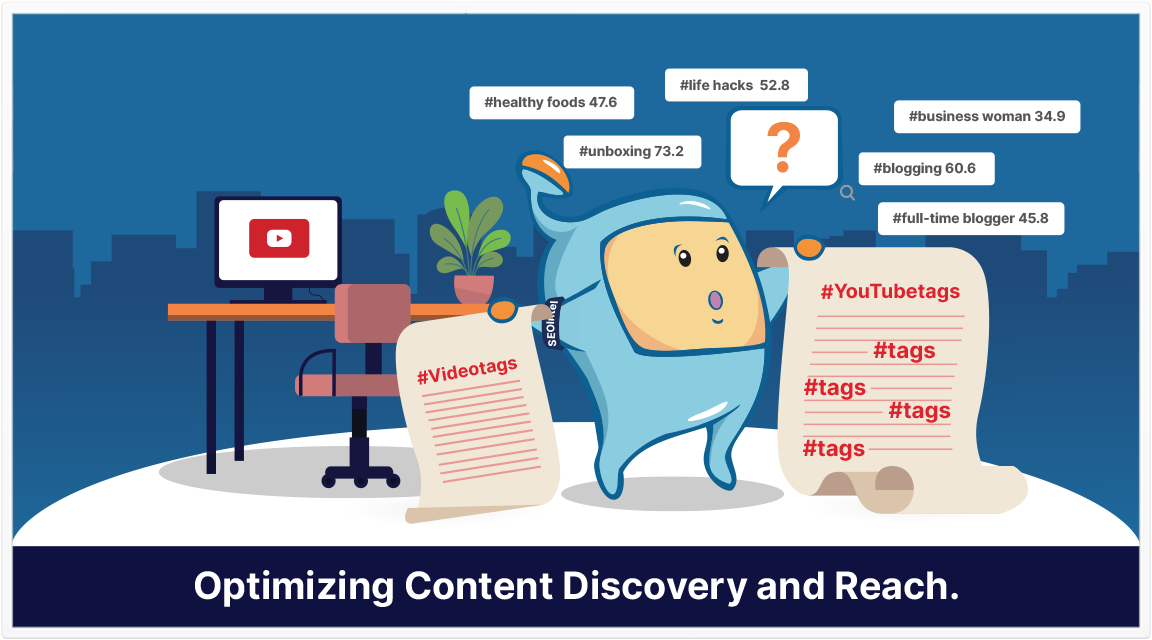
Here is what you will read in this article:
YouTube tags are descriptive keywords or phrases that help categorize and classify your videos.
These tags provide relevant information to both viewers and YouTube's search algorithm, making it easier for users to discover your content.
By associating your video with specific tags, you increase its chances of appearing in search results and related video suggestions.
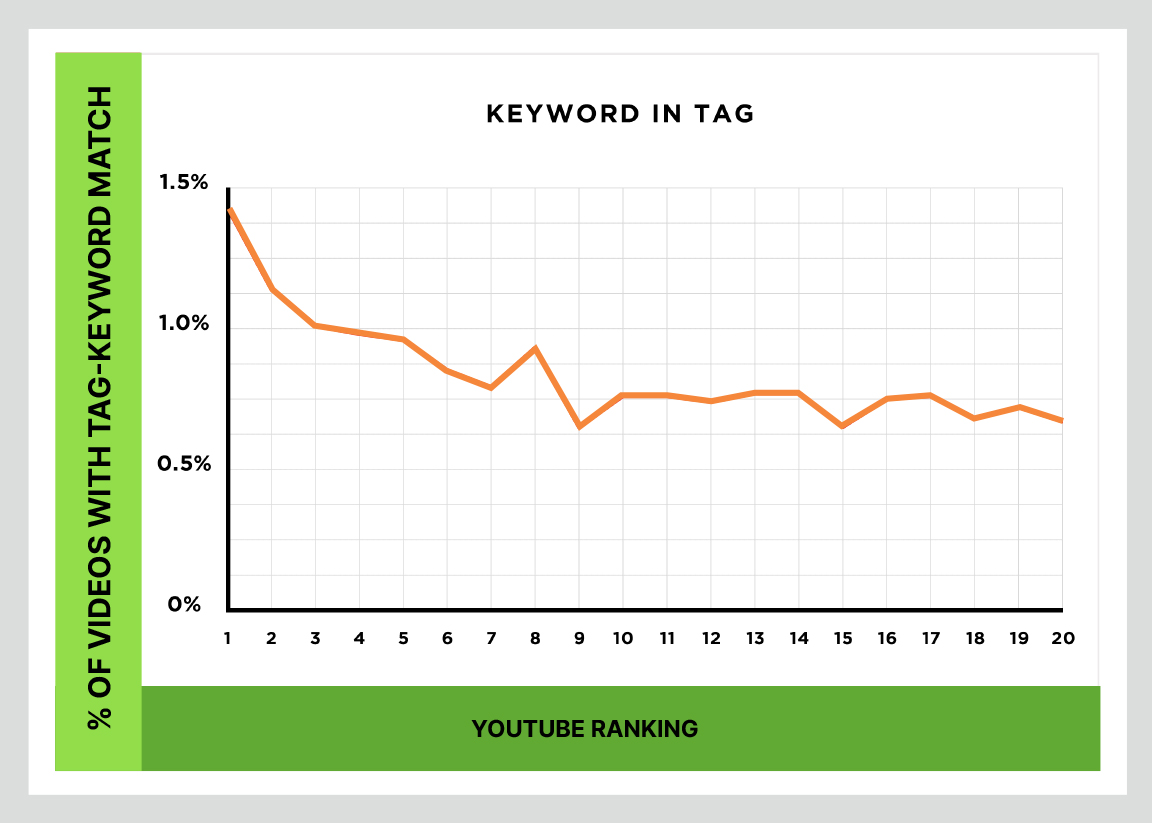
YouTube tags play a crucial role in helping your videos get discovered and rank higher in search results.
Understanding the importance of YouTube tags is essential for content creators and businesses looking to maximize their video's visibility and reach.
Here are six key reasons why YouTube tags are important:
YouTube tags significantly impact the visibility of your videos.
When users search for specific keywords or topics on YouTube, the platform's algorithm considers various factors, including video titles, descriptions, and tags.
By optimizing your tags with relevant keywords, you increase the likelihood of your video appearing in search results, making it more visible to potential viewers.
The right tags can help your video stand out from the competition and attract organic traffic.
YouTube's search algorithm relies on tags to understand the content and context of your videos.
When you use tags that accurately describe your video's content, you signal to the algorithm that your video is relevant to specific search queries.
This increases your video's chances of ranking higher in search results, leading to more exposure and organic traffic.
Proper tag optimization can give your videos a competitive edge and help them outperform similar content in search rankings.
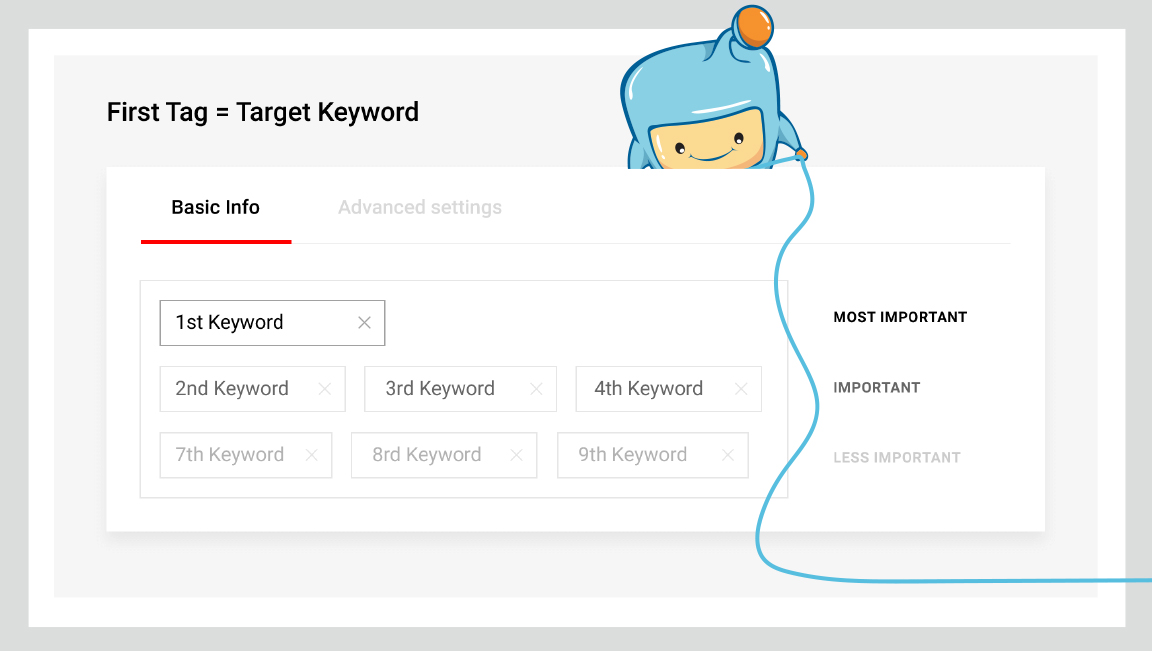
One of the significant advantages of YouTube tags is their ability to target a specific audience interested in your video's topic.
By using specific and relevant tags, you can attract viewers who are genuinely interested in your content.
When users search for specific tags or related content, your video has a higher chance of appearing in the "Related Videos" section.
This targeted reach increases the likelihood of attracting engaged viewers who are more likely to watch, like, comment, and share your videos.
YouTube tags help categorize and classify your videos.
They provide additional context to YouTube's algorithm about the content and subject matter of your video.
By accurately tagging your videos, you enable YouTube to recommend your content to viewers who have shown an interest in similar content.
This categorization increases your video's chances of being suggested as a related or recommended video, expanding its reach and attracting viewers who are more likely to engage with your content.
While some traffic sources may provide temporary boosts in views, YouTube tags contribute to long-term organic traffic.
When you optimize your tags effectively, your video can continue to attract viewers over time, even months or years after its initial upload.
By targeting relevant keywords and optimizing your tags, you increase the chances of your video appearing in search results over an extended period.
This sustained traffic can lead to continuous views, engagement, and potential channel growth.
Properly utilizing YouTube tags gives you a competitive advantage over similar videos in your niche.
By conducting thorough keyword research and selecting strategic tags, you can differentiate your video from others and increase its chances of standing out in search results.
Effective tag optimization can lead to higher click-through rates, increased watch time, and ultimately, a stronger presence on YouTube.
By staying updated with industry trends and incorporating relevant tags, you can outperform competitors and attract a loyal audience.
YouTube tags are not just a minor aspect of video optimization; they are a crucial component for success on the platform.
By understanding the importance of YouTube tags and optimizing them effectively, you can improve your video's visibility, search rankings, audience targeting, and long-term traffic.
Implementing best practices for YouTube tag optimization gives you a competitive edge and enhances your chances of reaching a larger and more engaged audience on YouTube.
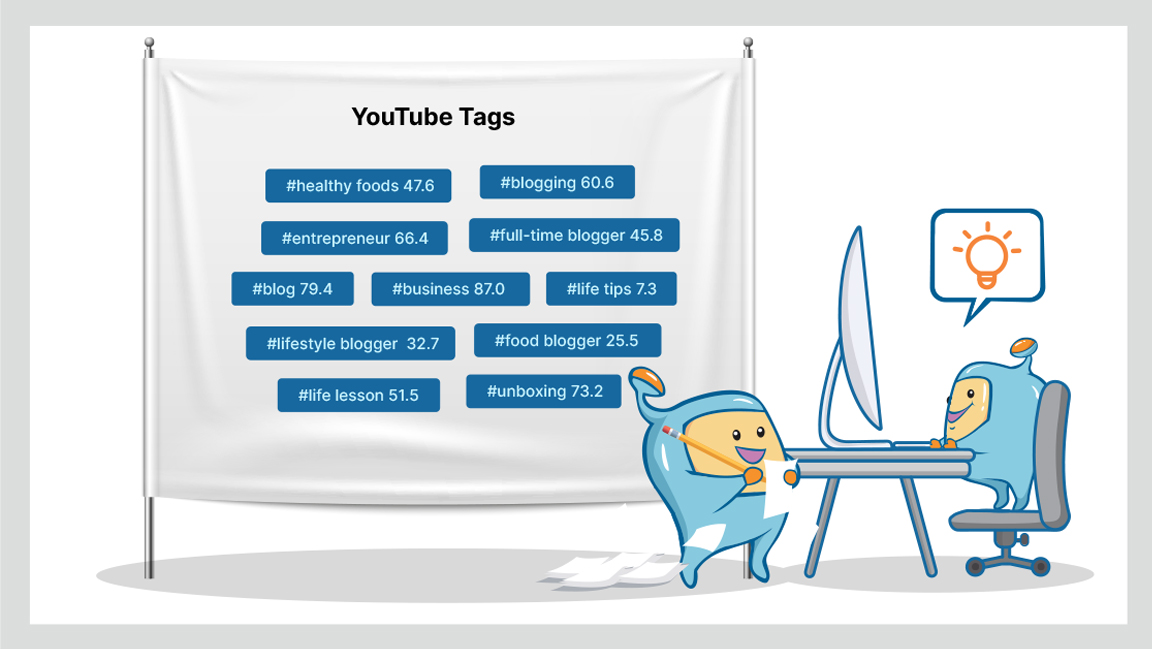
Choosing the right YouTube tags is a critical step in optimizing your videos for maximum visibility and reaching your target audience.
By selecting relevant and strategic tags, you increase the chances of your videos appearing in search results and attracting organic traffic.
Here's a step-by-step guide on how to choose the right YouTube tags:
Before choosing tags, it's essential to have a clear understanding of your video's main topics and subject matter.
Consider the primary focus of your video and the key points you want to convey to your viewers.
This step will help you identify the core themes around which your tags should revolve.
Keyword research is a crucial step in choosing effective tags for your YouTube videos.
Start by brainstorming a list of keywords related to your video's topic.
These can be general terms or specific phrases that users may search for when looking for content like yours.
Tools like Google Keyword Planner, SEMrush, or Ahrefs can help you discover relevant keywords with appropriate search volume.
Look for keywords that are both popular and relevant to your video's content.
Analyzing the tags used by top-ranking videos in your niche can provide valuable insights and inspiration for selecting relevant tags for your own videos.
Study the tags used by successful channels that create similar content and analyze how they align with their video's topic and target audience.
While you shouldn't copy their tags directly, this research can help you identify relevant tags that you might have overlooked.
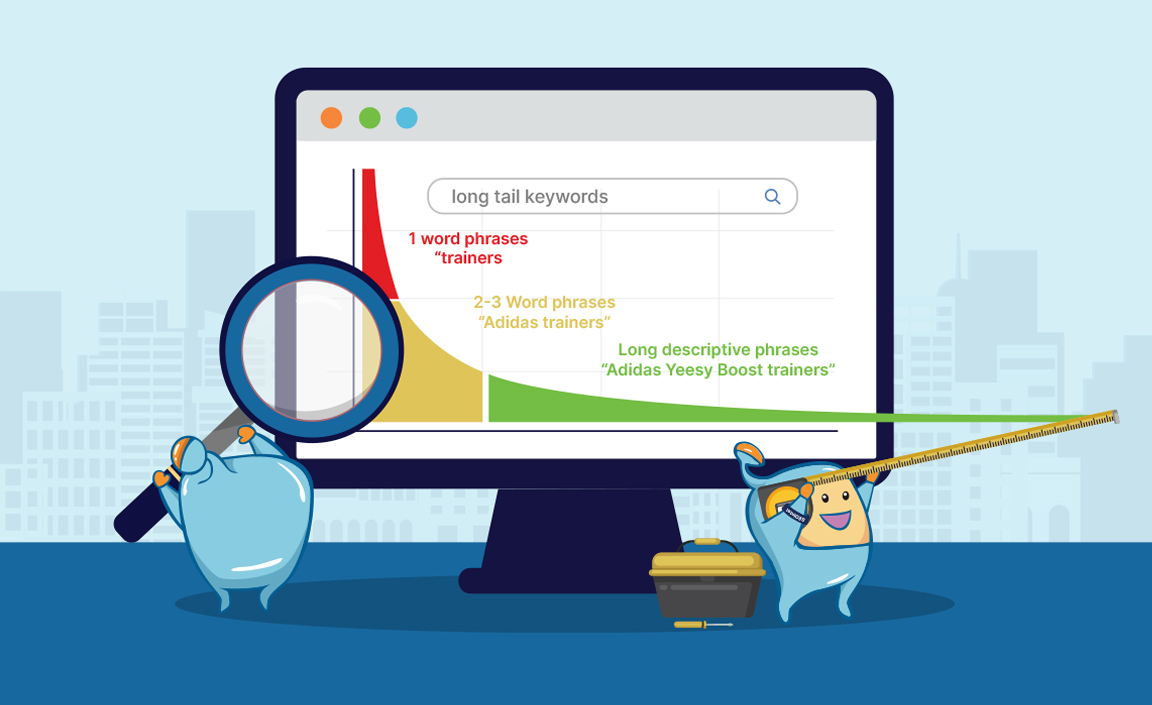
Incorporating long-tail keywords in your tags is an effective strategy to target a more specific audience.
Long-tail keywords are longer and more specific keyword phrases that users often search for when looking for detailed information or niche content.
By including these long-tail keywords in your tags, you can attract viewers who are specifically interested in the detailed aspects of your video's topic.
This approach can help you stand out from broader and more competitive tags.
When choosing tags, it's important to strike a balance between relevance and search volume.
Relevance ensures that your tags accurately describe your video's content, making it easier for the algorithm to understand and categorize your video.
At the same time, consider the search volume associated with each tag.
Select tags that have a reasonable search volume, indicating that users are actively searching for content related to those keywords.
A combination of relevant tags with moderate search volume can help you attract organic traffic and reach the right audience.
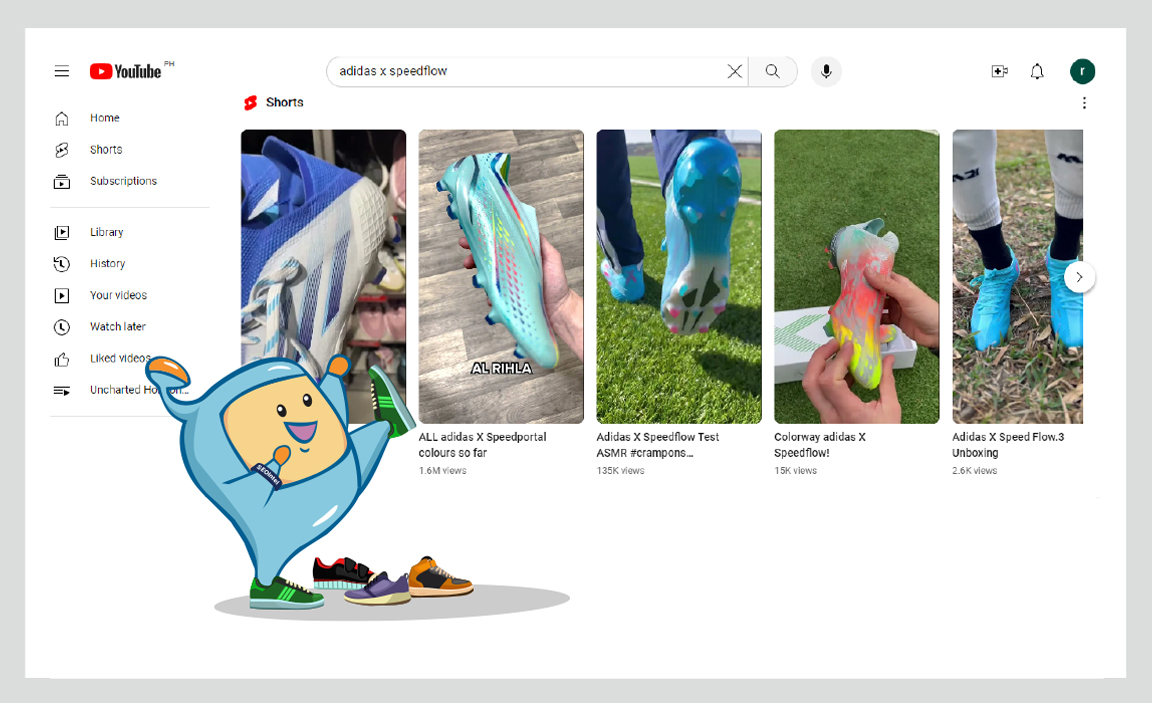
If your video features specific brands or products, including relevant branded tags can help increase its visibility among relevant audiences.
Incorporate tags related to the brand names, product names, or specific terms associated with the featured brands.
This can help your video appear in searches specifically targeting those brands, attracting viewers who are interested in those products or companies.
Effective tag selection is a continuous process that requires adaptation and optimization to ensure your videos remain visible and accessible to your intended audience.
Optimizing your YouTube tags is crucial for improving the visibility and searchability of your videos.
By following best practices, you can ensure that your tags effectively communicate the content of your videos and attract the right audience.
Here are seven best practices for YouTube tag optimization:
When choosing tags, include a mix of specific and broad tags related to your video's content.
Specific tags accurately describe the key aspects of your video, while broad tags encompass the overall topic.
This approach helps YouTube's algorithm understand the context of your video, increasing the chances of it being recommended to the right audience.
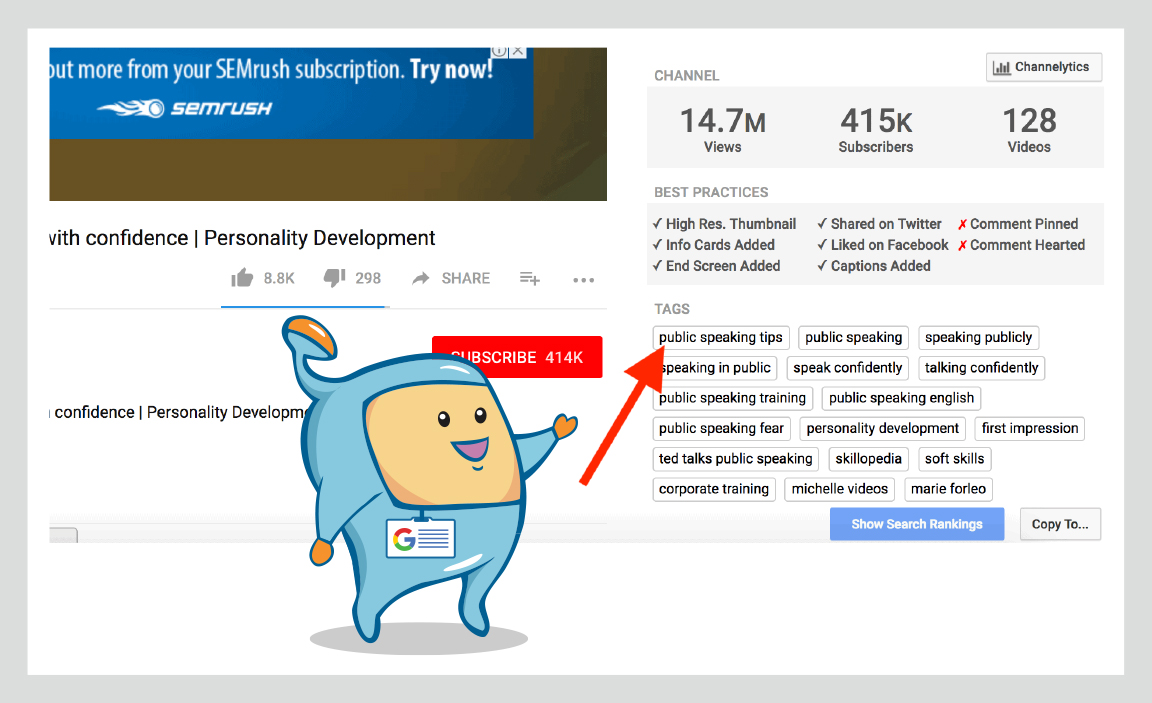
Focus on tags that have a higher search volume to increase your video's chances of appearing in search results.
These tags indicate that users are actively searching for content related to those keywords.
While it's important to consider relevance, tags with higher search volume offer more opportunities to attract organic traffic and reach a larger audience.
Incorporate common misspellings or variations of your tags to capture a broader audience.
People often make typing errors or use alternative spellings when searching for videos.
By including these variations in your tags, you increase the likelihood of your video appearing in search results, even if users don't input the correct spelling.
While YouTube allows you to add multiple tags to your videos, avoid overusing them.
Adding excessive tags can be seen as spammy and may negatively impact your video's visibility.
Aim to include around 10-15 relevant and descriptive tags that accurately represent the content of your video.
Quality tags are more important than quantity.
If your video is relevant to a specific location, include location-specific tags to target viewers in that area.
For example, if you're showcasing local attractions or providing location-specific tips, include tags that mention the city or region.
This helps YouTube's algorithm understand the geographical context of your video, making it more likely to be shown to viewers in that location.
Test different combinations of tags to see which ones yield better results in terms of visibility and audience engagement.
Some tags may perform better than others in attracting the right audience or ranking higher in search results.
By experimenting with different tag variations, you can optimize your video's discoverability and refine your tagging strategy over time.
Regularly revisit and update your video's tags based on changing trends, audience preferences, and new keyword opportunities.
As your channel grows and your content evolves, certain tags may become less relevant or new tags may emerge.
Stay proactive and keep your tags up to date to ensure that your videos remain aligned with current search trends and audience interests.
Performing thorough YouTube tag research is essential for optimizing your videos and improving their discoverability.
Fortunately, there are several tools and resources available to help you identify relevant and effective tags.
Here are four key tools and resources you can utilize for YouTube tag research:
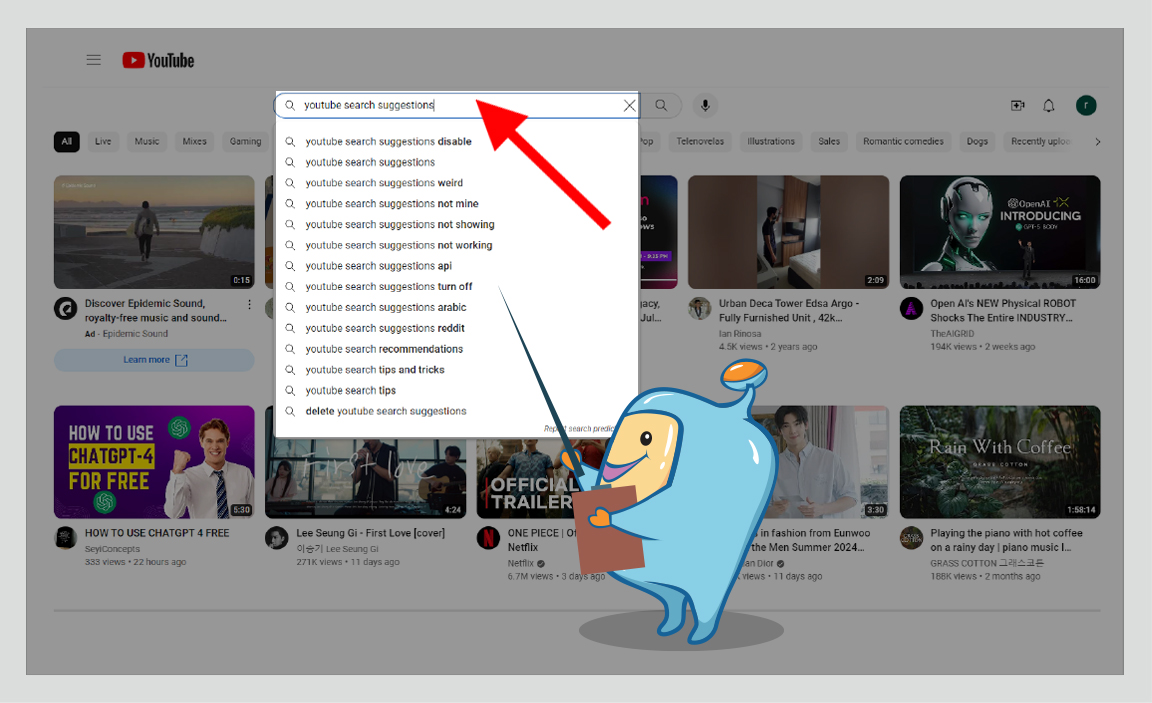
One of the simplest yet effective ways to discover popular tags is by leveraging YouTube's search suggestions.
When you start typing a keyword or phrase into the YouTube search bar, it automatically suggests related search queries.
These suggestions are based on real-time user search data, providing valuable insights into popular search terms.
By paying attention to these suggestions, you can identify relevant tags that align with the interests of your target audience.
Google Trends is a powerful tool that allows you to explore the popularity and search volume of specific keywords over time.
While Google Trends primarily focuses on web search trends, you can also use it to gain insights into YouTube search trends.
By entering relevant keywords related to your video's topic, you can discover their search interest over different periods and regions.
This information helps you identify trending tags and optimize your content accordingly.

Utilizing dedicated keyword research tools can significantly enhance your tag research process.
Tools like Google Keyword Planner, SEMrush, or Ahrefs provide valuable data on search volume, competition, and related keywords.
These tools allow you to explore keyword variations, analyze search trends, and identify high-potential tags for your YouTube videos.
By understanding the search volume and competitiveness of specific tags, you can make informed decisions and select tags that offer the best chances of visibility and audience reach.
Analyzing the tags used by successful channels in your niche can provide valuable insights and inspiration for your own tag selection.
Identify top-ranking channels that create similar content and examine the tags they use for their videos.
While it's important not to copy their tags directly, this analysis can help you identify relevant tags you might have overlooked or discover new tag variations that can boost the discoverability of your videos.
Tools like vidIQ and TubeBuddy offer browser extensions that display competitor tags, making it easier to analyze their strategies.
Analyzing and adjusting your YouTube tags is a crucial step in optimizing your video's performance and maximizing its visibility.
By monitoring the effectiveness of your tags and making necessary adjustments, you can improve your video's discoverability and attract a larger audience.
Here's a closer look at how to analyze and adjust your YouTube tags effectively:
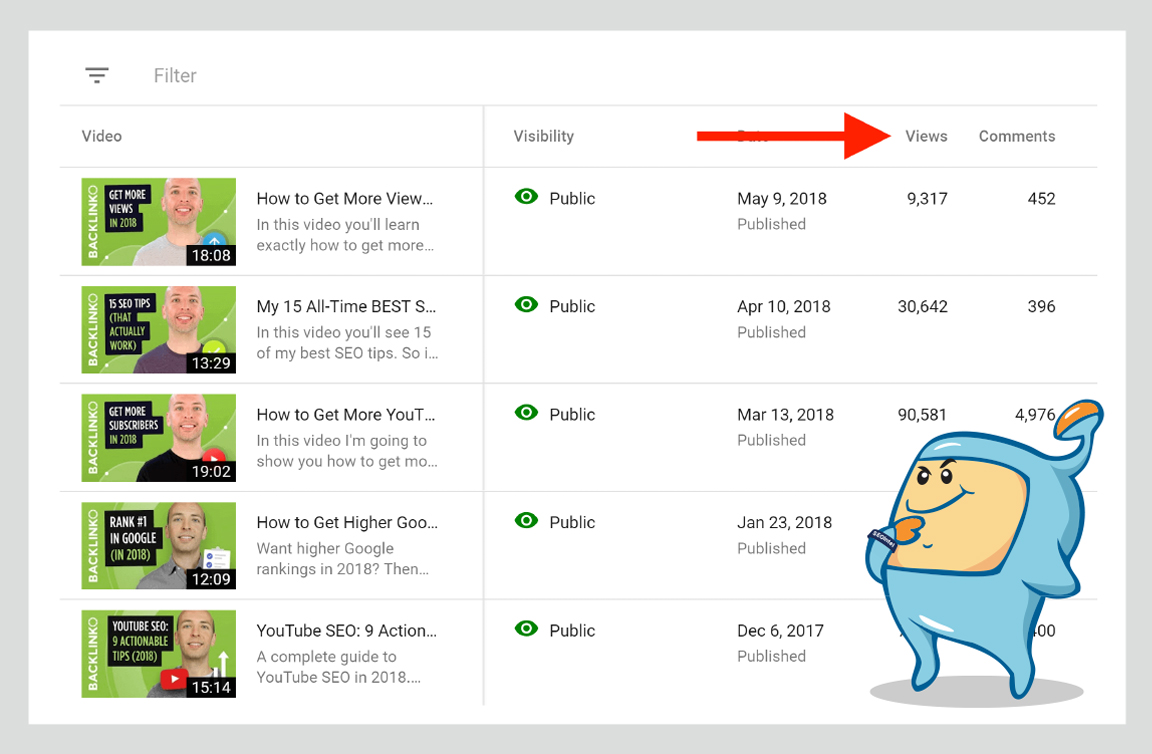
Start by tracking the analytics of your YouTube videos.
YouTube provides comprehensive analytics that offer valuable insights into how viewers discover and engage with your content.
Pay attention to metrics such as views, watch time, audience retention, and click-through rates.
These metrics will help you understand how well your video is performing and whether your tags are effectively attracting the right audience.
Compare the performance of different tags used in your videos.
Identify which tags are generating more views, higher watch time, or better audience retention.
Look for patterns and correlations between specific tags and positive performance metrics.
By analyzing the tag performance data, you can gain insights into which tags are effectively attracting viewers and driving engagement.
Experiment with different tag variations and combinations to see how they impact your video's performance.
Test new tags that are relevant to your video's content and audience.
Monitor the analytics of these videos and compare the results with previous videos.
Continuously iterate and refine your tag selection based on the performance data and audience feedback.
This iterative approach allows you to optimize your tags over time and improve your video's visibility.
Stay updated with emerging trends, popular keywords, and changes in your niche.
Monitor shifts in search patterns and adapt your tag selection accordingly.
By keeping a pulse on the latest industry developments, you can ensure that your tags remain relevant and aligned with current search trends.
Regularly revisit and update your tags to leverage new keyword opportunities and maximize your video's visibility.
When it comes to YouTube tag optimization, it's important to avoid common mistakes that can hinder your video's discoverability and engagement.
By steering clear of these pitfalls, you can ensure that your tags effectively represent your content and attract the right audience.
Here are seven common YouTube tag mistakes to avoid:
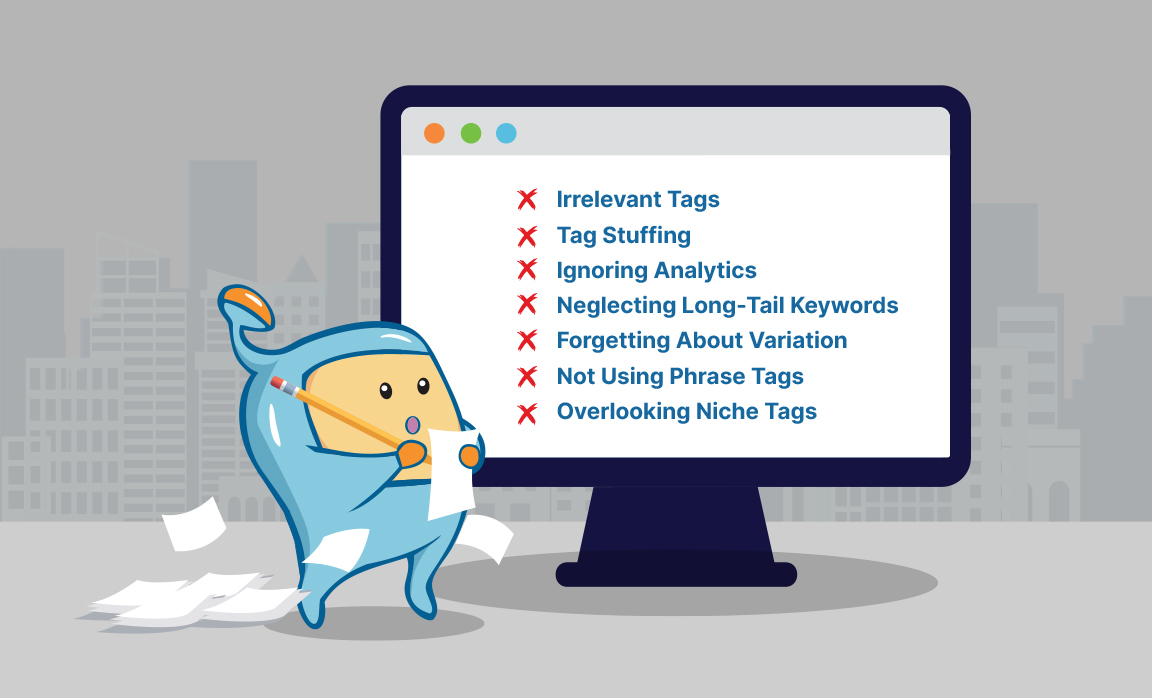
Using tags that are unrelated to your video's content is a mistake that can mislead viewers and harm your channel's credibility.
Ensure that your tags accurately reflect the key topics and themes of your video.
Irrelevant tags not only confuse viewers but may also lead to lower engagement and negative feedback.
Overloading your videos with excessive tags or using unrelated popular tags solely for visibility is considered tag stuffing.
This practice is against YouTube's guidelines and can negatively impact your video's visibility and search rankings.
Instead, focus on using a reasonable number of relevant tags (around 10-15) that accurately describe your video's content.
Neglecting to analyze the performance of your tags and make adjustments based on data is a common mistake.
YouTube's analytics provide valuable insights into how viewers discover and engage with your videos.
Regularly track metrics such as views, watch time, and audience retention to understand the effectiveness of your tags.
Use this data to refine your tagging strategy and improve your video's performance.
Focusing only on broad and highly competitive keywords is a mistake that can make it difficult for your video to rank well in search results.
Incorporating long-tail keywords specific to your video's content allows you to target a more niche audience.
Long-tail keywords often have less competition and can increase the chances of your video being discovered by users searching for specific topics.
Including variations of your tags is essential to capture different ways users may search for content.
People may use synonyms, alternate spellings, or different word orders when searching for videos.
By incorporating variations of your tags, you increase the likelihood of your video appearing in search results for a wider range of queries.
Alongside individual keywords, consider using phrases as tags.
Phrases provide additional context and specificity to your video's content.
For example, if your video is about "healthy vegan recipes," consider using phrases like "easy vegan recipes" or "plant-based meal ideas" as tags.
Phrase tags can help you capture related search queries and attract viewers interested in specific aspects of your video's topic.
While it's important to include broader tags, don't overlook niche tags that are specific to your video's content.
Niche tags help you target a highly engaged and interested audience.
For instance, if your video is about "DIY home organization," include tags like "small space organization tips" or "closet organization hacks" to attract viewers who are specifically looking for those topics.
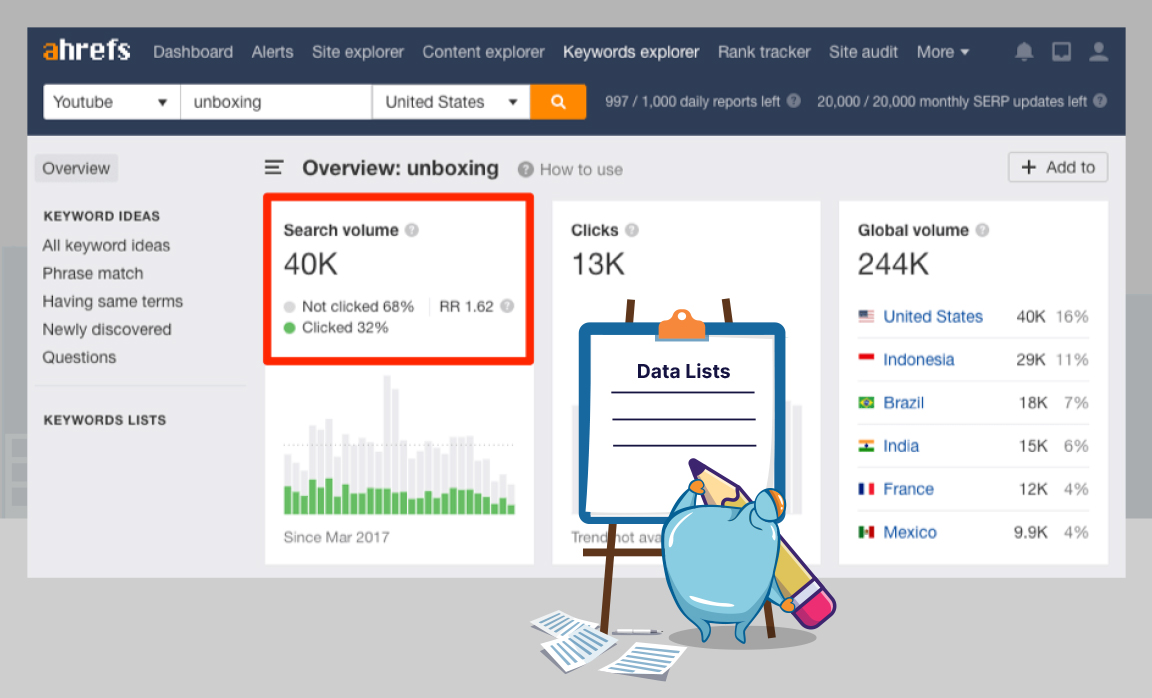
YouTube's algorithm plays a significant role in determining which videos are shown to users.
By strategically selecting and utilizing tags, you can increase the chances of your videos appearing in relevant search results and attracting a larger audience.
Here are some key strategies for optimizing your tags for YouTube's algorithm:
When choosing tags, incorporate both primary and secondary keywords.
Primary keywords should be the most relevant and descriptive terms that best represent your video's content.
Secondary keywords provide additional context and support the primary keywords.
Including a mix of primary and secondary keywords helps YouTube's algorithm understand the content of your video and match it with relevant user search queries.
While it's important to include tags with higher search volume and competition, also consider using tags with lower competition.
High competition tags may be more challenging to rank for, but they can still contribute to your video's visibility.
Additionally, including tags with lower competition allows your video to have a better chance of ranking higher in search results, especially for specific niche topics.
Balancing high and low competition tags provides a broader reach while targeting more focused and engaged audiences.
Think about the intent behind user search queries and align your tags accordingly.
Consider whether users are looking for tutorials, reviews, information, or entertainment.
By understanding the search intent, you can choose tags that accurately reflect the purpose and content of your video.
Matching your tags to user search intent enhances the relevancy of your video and increases the likelihood of it being recommended by YouTube's algorithm.
YouTube's autocomplete feature can be a valuable resource for finding relevant tags.
As you type keywords related to your video's topic in the YouTube search bar, YouTube suggests popular search queries.
These suggestions are based on real-time user searches, providing insights into what users are actively searching for.
Pay attention to these suggestions and consider incorporating them as tags.
Leveraging YouTube's autocomplete ensures that your tags align with popular and current search trends.
Regularly analyze the performance of your videos and evaluate the impact of your tags.
Track metrics such as views, watch time, engagement, and click-through rates.
Identify patterns and correlations between specific tags and positive performance metrics.
If certain tags consistently contribute to better video performance, consider using them more frequently in future videos.
Monitoring video performance allows you to fine-tune your tag selection based on actual audience engagement data.
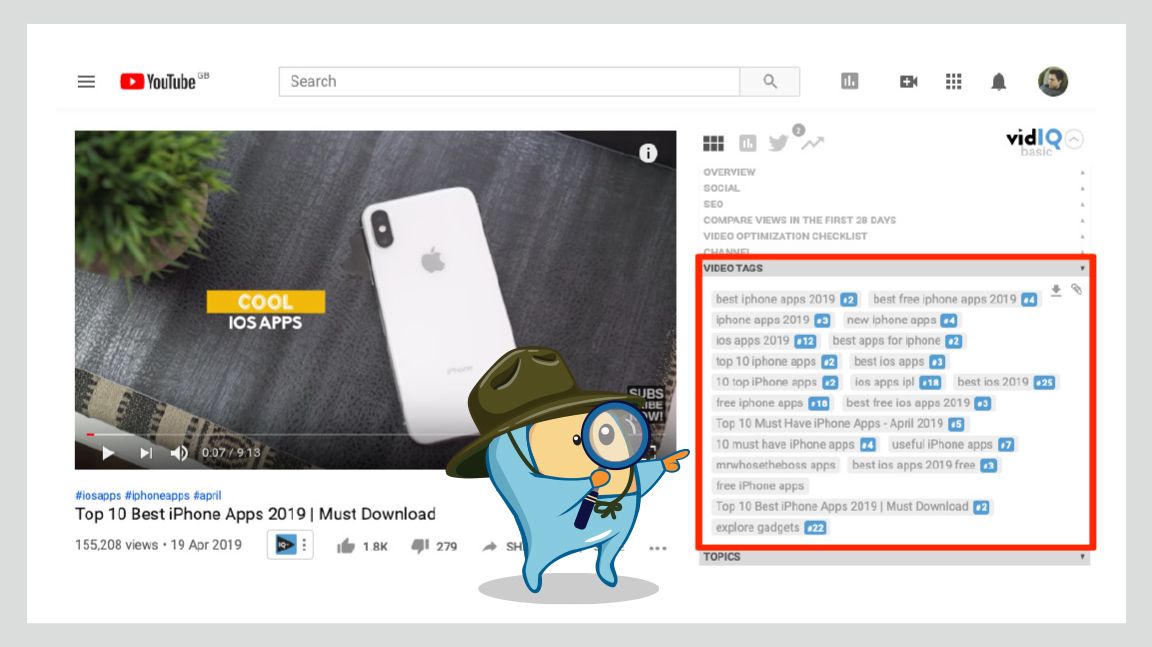
In addition to choosing the right tags, optimizing their placement within your video and implementing additional techniques can further enhance your video's visibility and engagement.
Understanding the importance of tag placement and utilizing additional optimization techniques can significantly impact your video's performance on YouTube.
Here are some key strategies to consider:
The placement of your tags within YouTube's tag field can influence their impact on your video's visibility.
It's generally recommended to include your most important tags at the beginning of your tag list.
YouTube's algorithm places more weight on the first few tags, so prioritize the ones that accurately represent your video's content.
Start with the most relevant and descriptive tags to ensure they have a higher chance of influencing search rankings and attracting the right audience.
Alongside tags, ensure that your video's title and description accurately reflect its content.
Descriptive titles and descriptions not only provide valuable information to viewers but also help YouTube's algorithm understand the context and relevance of your video.
Incorporate your primary keywords naturally within your title and description to optimize for search queries.
Additionally, make sure your titles and descriptions are compelling and concise to capture viewers' attention and encourage click-through rates.
Building a strong connection with your audience is essential for your video's success.
Encourage viewers to leave comments, likes, and shares on your videos.
Engaging with your audience not only fosters a sense of community but also signals to YouTube's algorithm that your video is valuable and relevant.
Respond to viewer comments, address their questions, and consider incorporating their suggestions in future videos.
Engaging with viewers increases the likelihood of them watching more of your content, which can lead to higher visibility and improved search rankings.
Thumbnails are the visual representations of your videos and play a crucial role in attracting viewers.
Design eye-catching and relevant thumbnails that accurately represent the content of your video.
Use vibrant colors, clear images, and concise text to create thumbnails that stand out among other videos.
A compelling thumbnail can increase click-through rates, encourage viewers to choose your video over others, and ultimately improve your video's visibility and engagement.
Video descriptions provide additional context to both viewers and YouTube's algorithm.
Use your description to expand on the content of your video, include relevant keywords, and provide links to related resources or social media profiles.
Incorporate your primary and secondary keywords naturally throughout the description to improve search rankings and increase your video's discoverability.
A well-optimized video description can improve your video's visibility in search results and attract a larger audience.
Adding closed captions or transcripts to your videos provides additional textual content that YouTube's algorithm can crawl.
This enhances your video's accessibility, searchability, and potential ranking in search results.
Closed captions and transcripts make your video more inclusive and can attract viewers who prefer or require captions.
Additionally, transcriptions of your video can be repurposed as blog posts or social media content, expanding your video's reach beyond YouTube.
Leverage other social media platforms, your website or blog, and email newsletters to promote your YouTube videos.
Share your videos with your existing audience and encourage them to watch, like, comment, and share.
Cross-promoting your videos on different platforms increases their visibility, extends your reach, and helps attract new viewers to your YouTube channel.
The more exposure your videos receive, the greater the chances of them gaining traction on YouTube's platform.
Collaborating with other creators in your niche can be mutually beneficial for growing your audience.
Collaborative videos or featuring each other's channels exposes your content to a new audience and encourages cross-promotion.
By tapping into each other's subscriber bases, you can attract new viewers who are already interested in similar content.
Collaborations provide an opportunity to reach a wider audience, increase your video's visibility, and foster potential partnerships within the YouTube community.
Prompt viewers to subscribe to your channel and turn on notifications for new video uploads.
Subscriptions help build a loyal audience who are more likely to engage with your content regularly.
Notifications ensure that subscribers don't miss any updates or new videos from your channel.
The more subscribers and active viewers you have, the better your video's performance and visibility can be.
Encourage viewers to become long-term subscribers and actively engage with your future videos.
Consistency is key to building a successful YouTube channel.
Regularly upload high-quality videos on a consistent schedule to establish a reliable presence for your audience.
Engage with viewer feedback, respond to comments, and address their questions.
Actively listening to your audience and incorporating their suggestions when relevant helps foster a loyal and engaged community.
By staying consistent and actively engaging with your viewers, you can increase your video's visibility, build trust, and encourage audience retention.
YouTube tags are an essential tool for optimizing your video's visibility, search rankings, and audience reach.
By understanding their importance, following best practices, and utilizing additional optimization techniques, you can maximize the impact of your tags and increase your video's visibility, search rankings, and overall success on the platform.
Remember to monitor performance, experiment with different tag variations, and stay up-to-date with trends to continuously refine and optimize your tags for maximum impact.